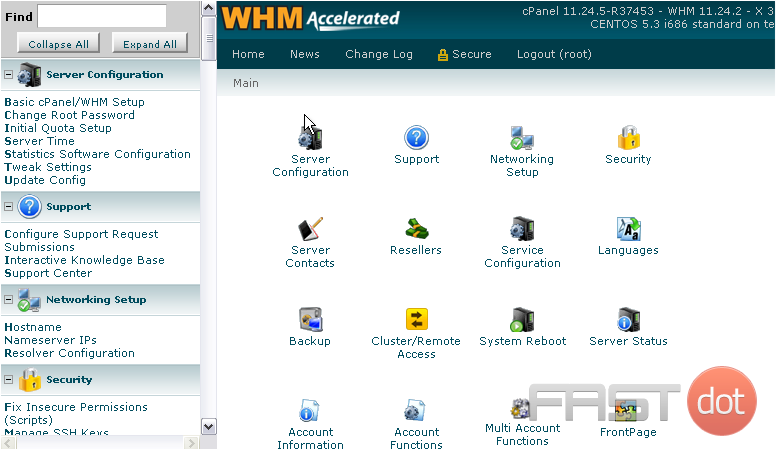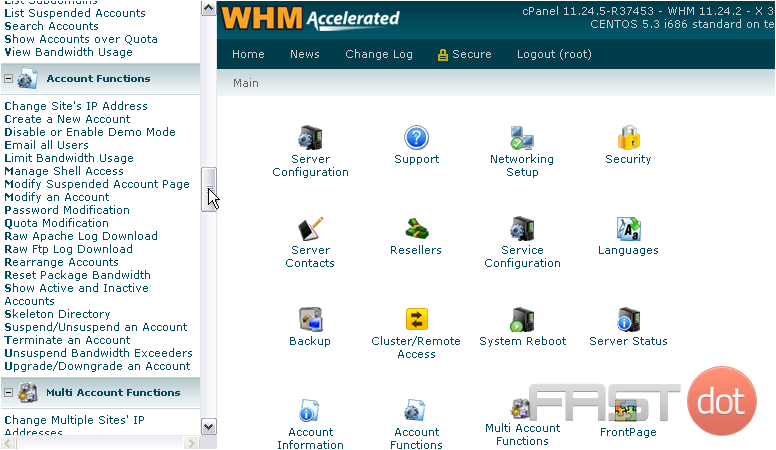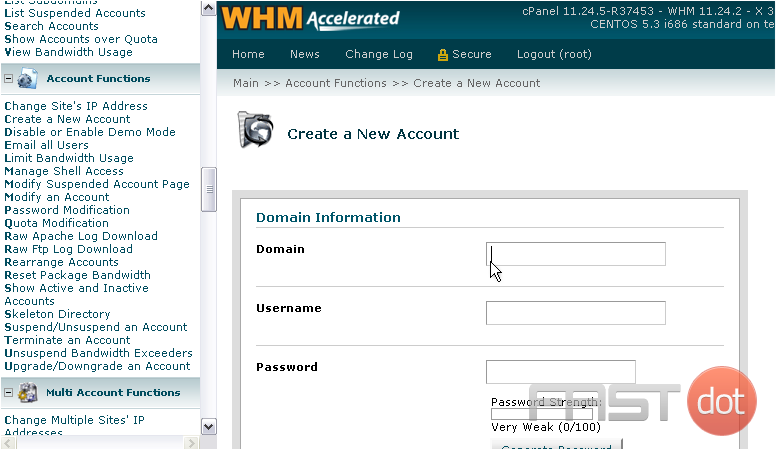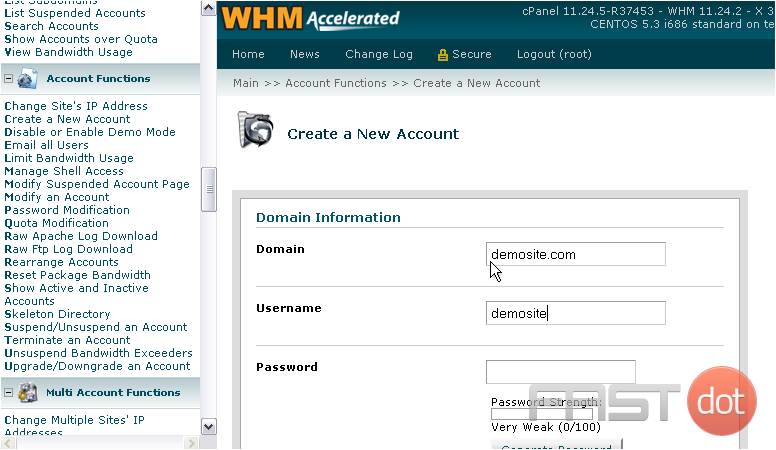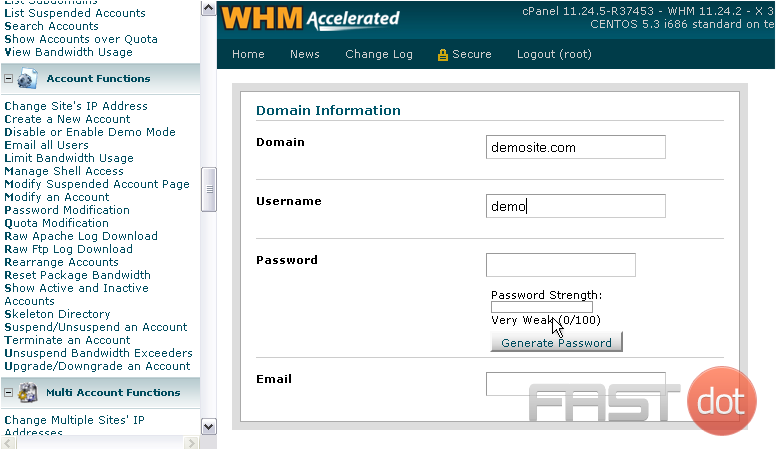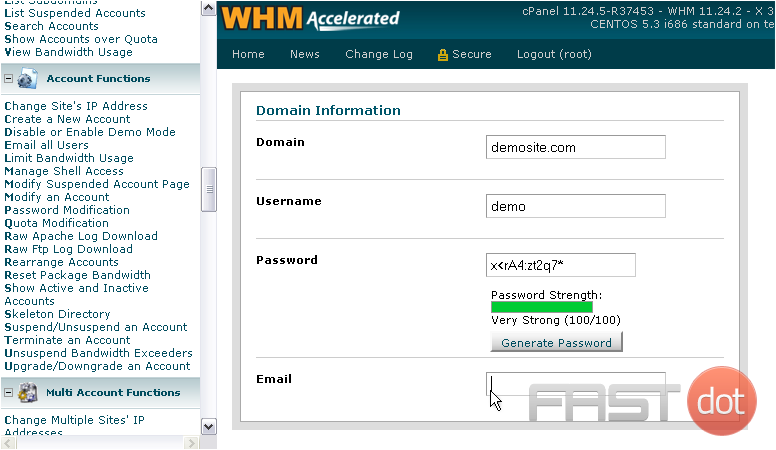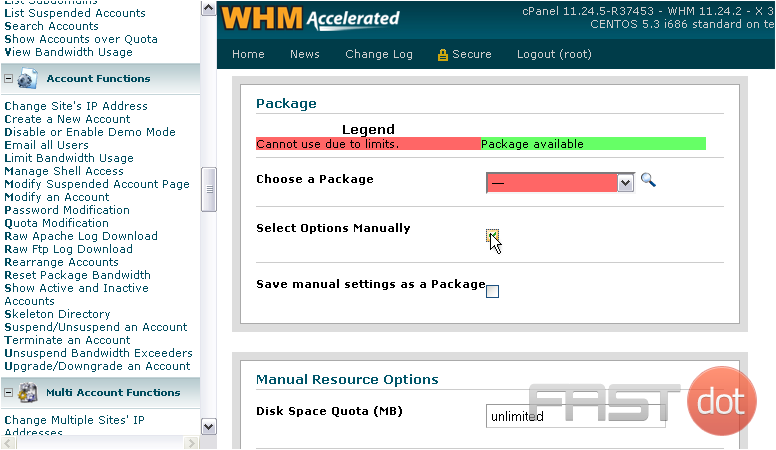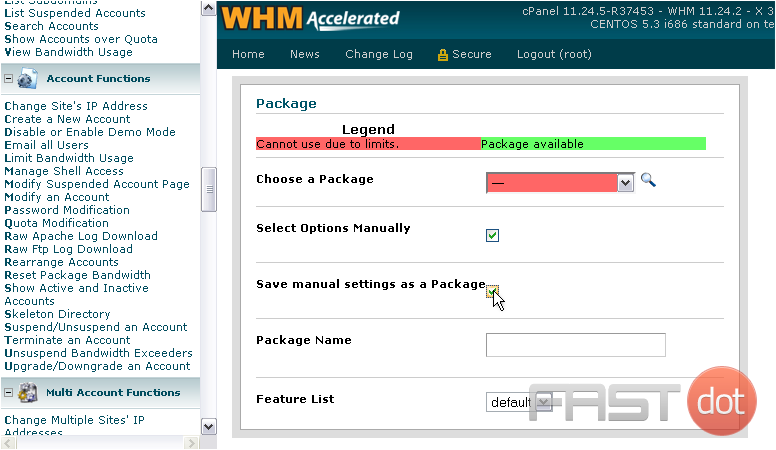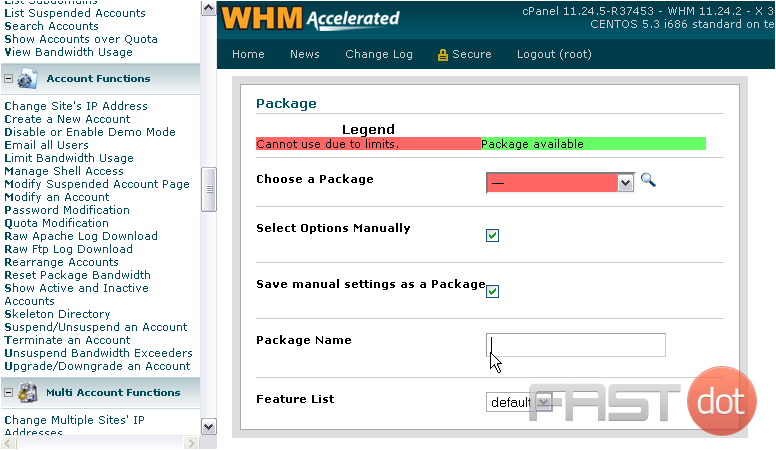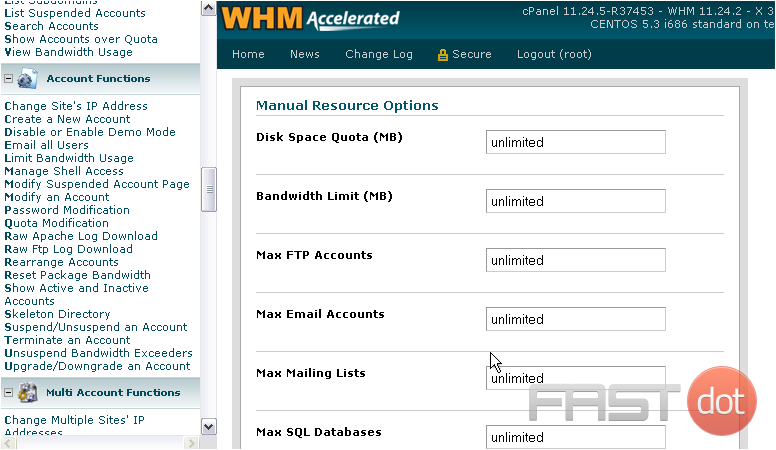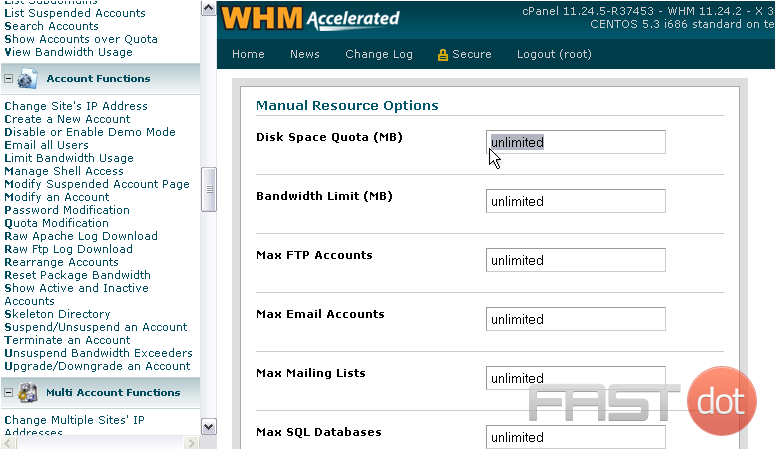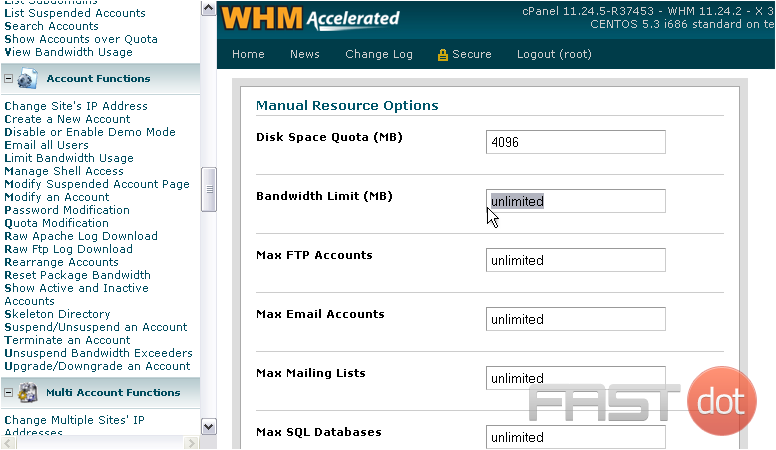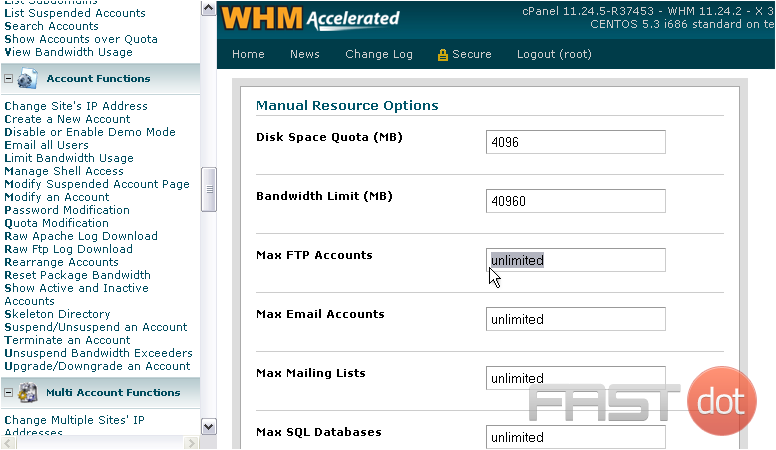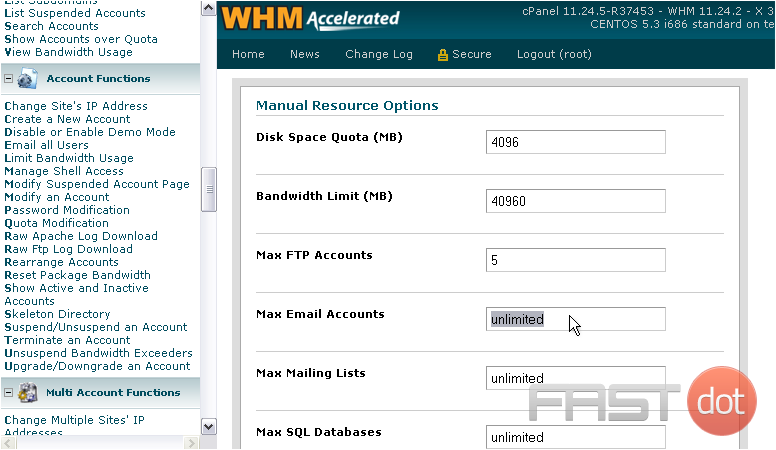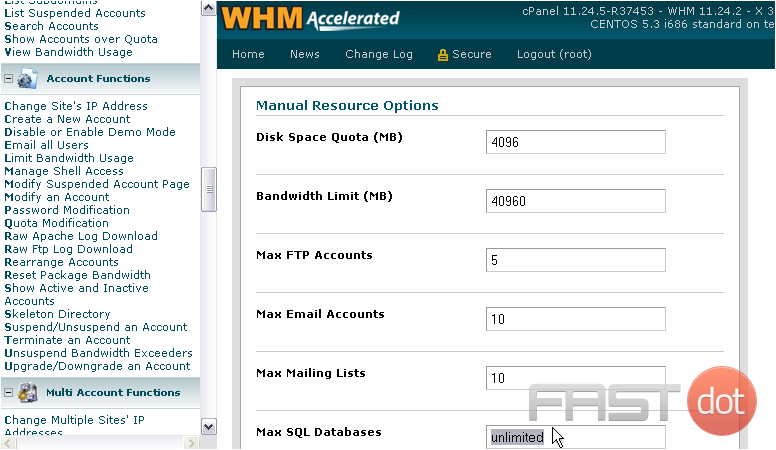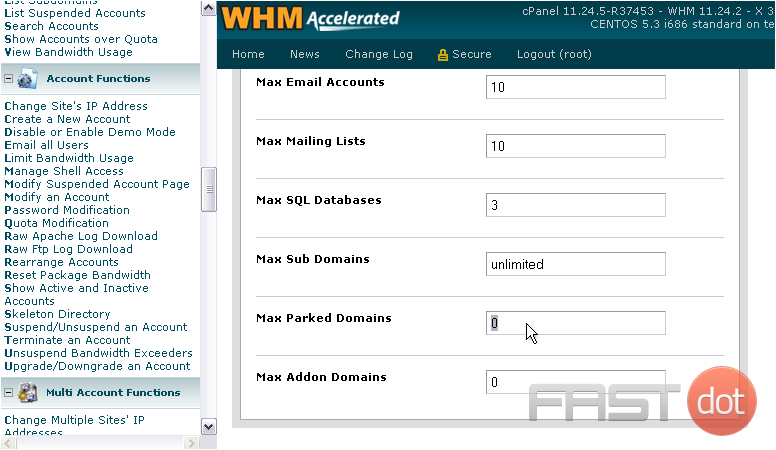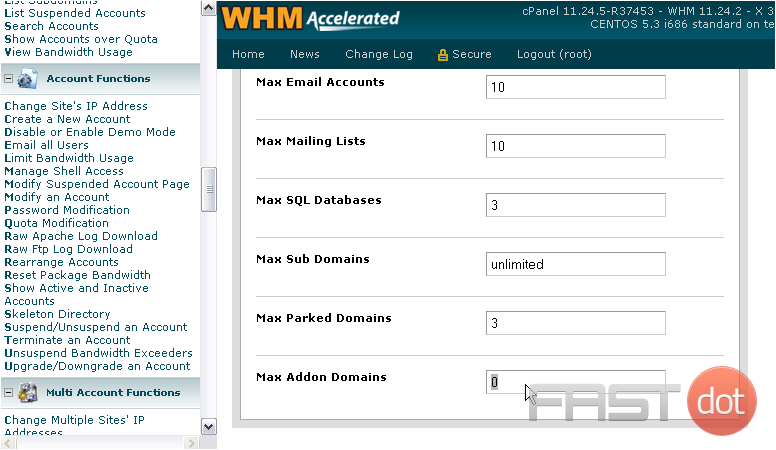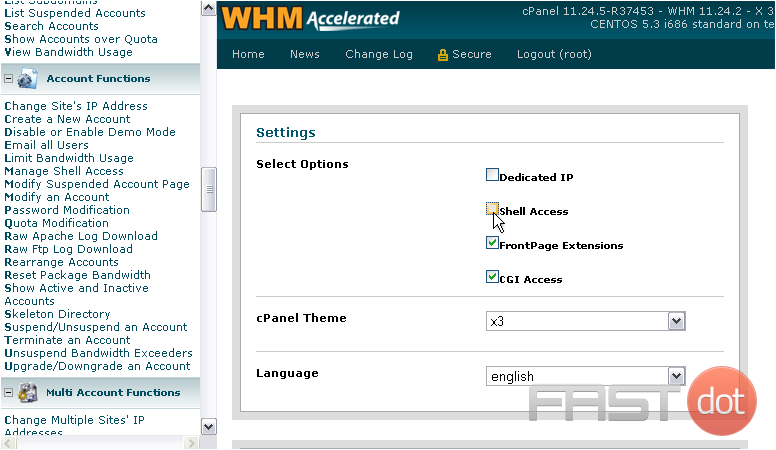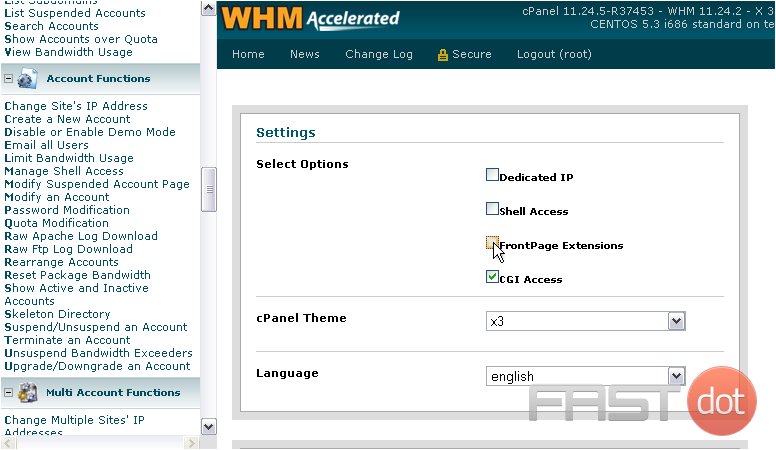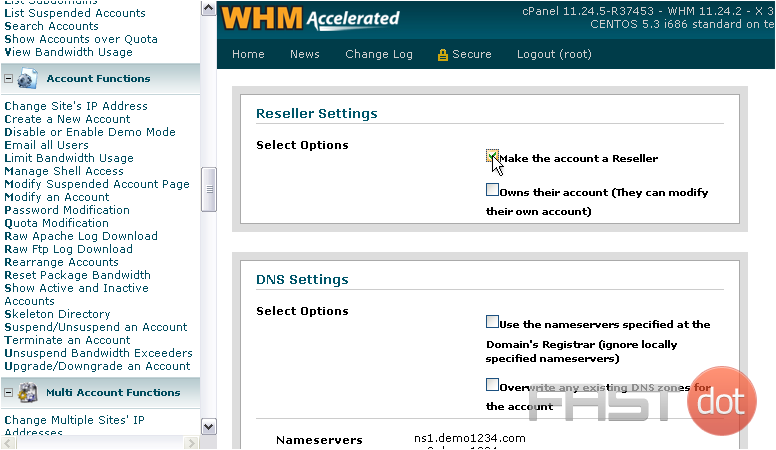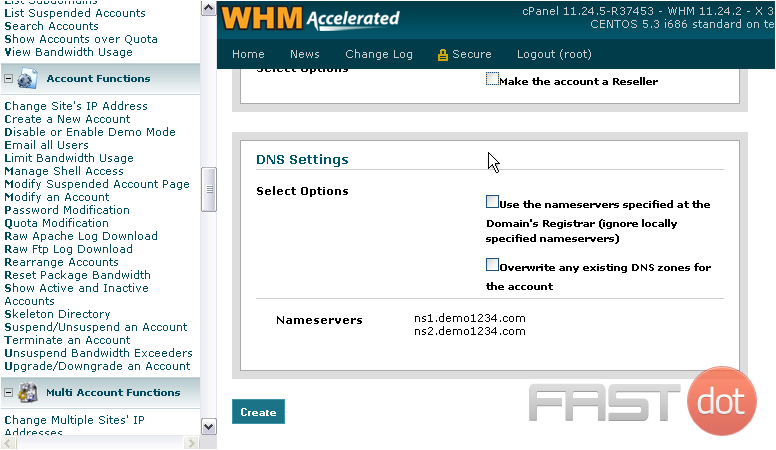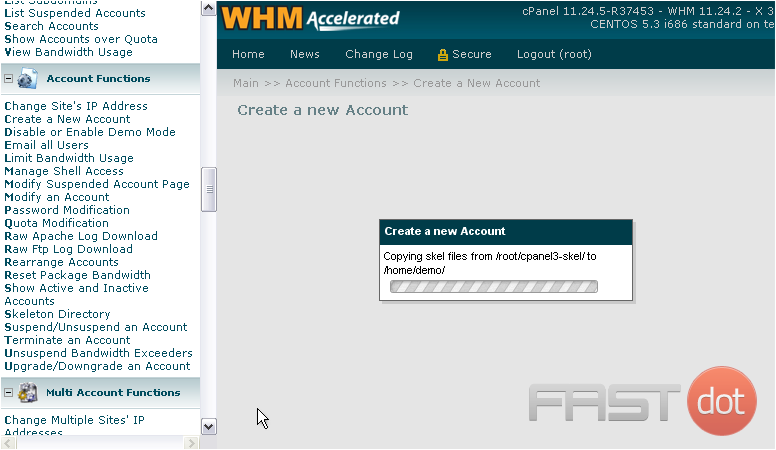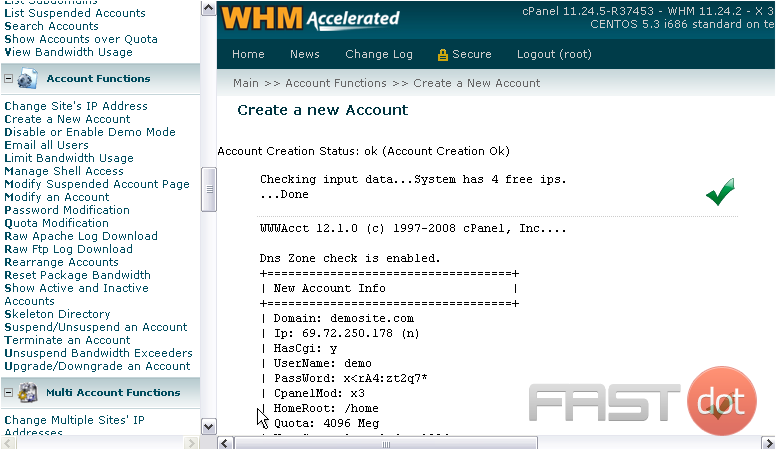This tutorial will show you how to create a new cPanel account in WHM
cPanel and WHM work hand in hand to make your clients’ websites accessible to their visitors. Now that your server and its services are all set up and ready for use, let’s find out how manage cPanel accounts.
1) Find the Account Functions menu.
2) Click Create a New Account.
3) Enter a domain name for the account to use.
4) The username should be filled in automatically, based on the domain name. Change it, if you want.
5) Now, enter or generate a password.
6) Type an e-mail address that should be used as this account’s main point of contact.
7) Next, we need to specify the limits to apply to this account. Choose a package from the drop-down menu, or select options manually.
8) We don’t have any packages yet, so let’s enter the settings manually.
9) Click this checkbox to save our manual settings as a new package.
10) Enter a Name for the package.
11) Select a different feature list, or just use the default.
12) All of these resource options allow you to enter unlimited as a value, if that’s what you wish to do.
There’s no such thing as unlimited disk space, despite what some hosts may want customers to think.
13) Let’s give this account (and package) a reasonable limit of 4 GB, specified in megabytes.
14) Next, set a monthly bandwidth limit. Bandwidth is more readily available than disk space, so we’ll set the limit to 40 GB.
15) Now, enter how many FTP accounts you want the client to be able to add, at maximum.
16) Repeat with E-mail Accounts and Mailing Lists, at your discretion.
Limiting an account to a certain number of SQL databases can help keep their resource usage down. However, experienced users will be able to bypass that effect by using one database for a number of programs.
17) Let’s set a reasonable limit for this plan.
18) Let’s leave Max Sub Domains as unlimited… but set Max Parked Domains to 3.
A parked domain is a domain name that sits on top of another, serving the same website to a client’s browser. They’re commonly used when website owners have the same domain on multiple top-level domains, such as with demo1234.com and demo1234.org.
Addon domains, on the other hand, allow a client to host a completely different website than the main site.
19) Since addon domains are more likely to use more resources, let’s limit those to 2. In essence, the client is limited to hosting three individual websites.
20) Dedicate an IP address to be used solely by this account, if you wish.
Giving customers Shell Access can cause a number of security issues, if your server isn’t configured correctly. We recommend disabling shell access, at least for the smaller packages you offer. Most users won’t have the slightest clue how to use the shell, anyway.
21) Uncheck this box to disable shell access.
The FrontPage Extensions for Apache have security issues and bugs. FrontPage itself has been discontinued since 2006.
22) We, therefore, recommend that you don’t enable FrontPage Extensions, either.
CGI Access can and should be left enabled, in most cases.
23) Select a different default cPanel theme from the list, if you wish. You can also choose from a number of languages for the client’s account to use by default.
24) If you wish for the account to have reseller privileges, click this checkmark.
25) Click this box if you want them to be able to modify their own account.
26) We don’t want this account to be a reseller, so uncheck that.
27) Check this box to use the nameservers specified at the domain’s registrar and ignore locally specified nameservers. This will probably prevent domain-related features from functioning with this account.
28) If a DNS zone already exists for the domain name you chose, click this checkbox to overwrite it.
29) We’re finished here. Click Create.
You’ll see a progress bar notifying you of the status of the creation process…
It might take several minutes for the process to complete.
This is what you’ll see when the account has been created successfully.
Congratulations! You’ve succesfully created your first cPanel account in WHM.
This is the end of the tutorial. You now know how to create a new cPanel account in WHM.
Do you have any questions? Ask us in the forums ?

